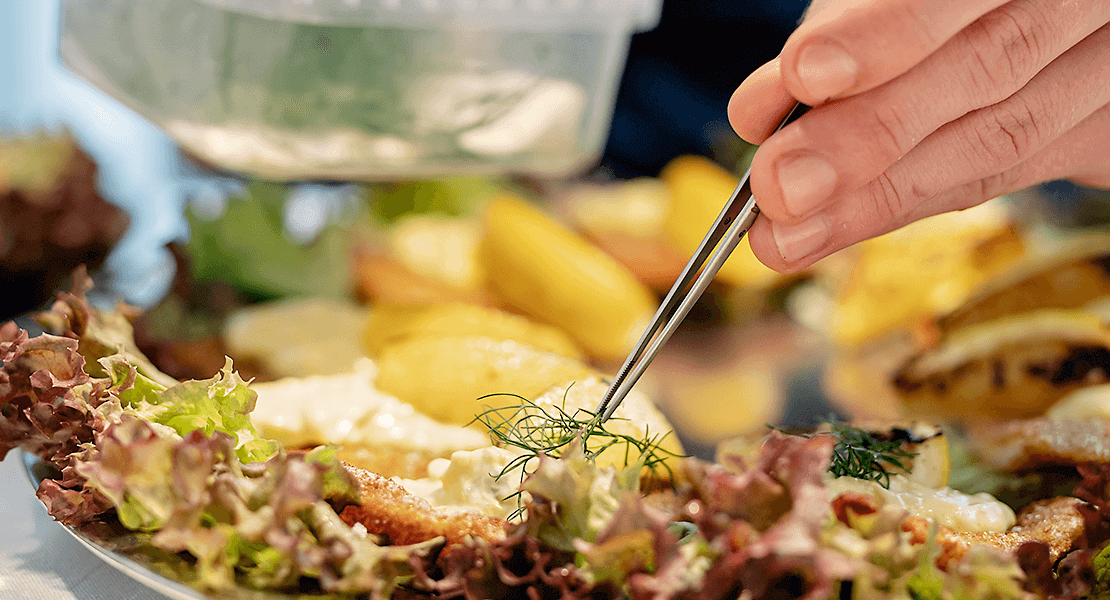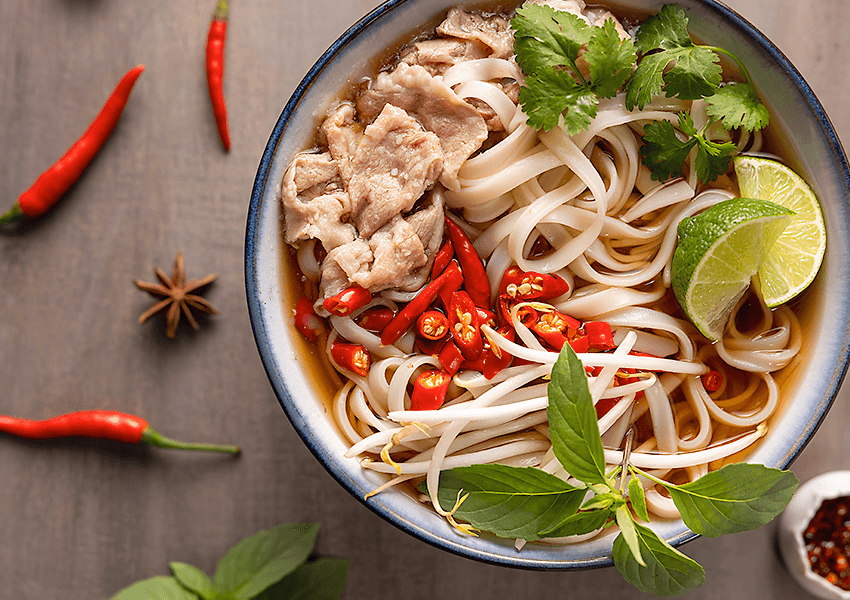
Cooking, like fashion, has its own accessories that give a dish personality and distinction.
Culinary additions like onions, garlic, shallots, grains, peppers, tubers, beans, root vegetables and animal proteins all find their way into kitchens and dishes around the world. Let’s explore what sets cuisines from different regions apart and discover the “accessories” that give standard ingredients a distinct, unique personality.
Accenting & Altering With Herbs
Herbs are a fantastic place to begin our exploration of accessorizing cooking and cuisine. Just the other day, I had a conversation with my mother about Caprese salad. She was going to an outdoor gathering and was asked to bring a dish. She wanted to make a simple salad of tomato, fresh basil, mozzarella and olive oil. In a bit of a panic, she discovered fresh basil was nowhere to be found and wondered if she could use cilantro instead. Cilantro would still be tasty, but it would give the salad an altogether different taste—one with more of a Mexican vibe. One simple ingredient—a little green herb—can have a huge impact on a dish. Cilantro finds its way into many cuisines between the tropics. Chefs in Central and South America, the Indian Subcontinent, North Africa and Southeast Asia all use it in dramatically different ways. It’s incredible how culinary accessories like herbs, spices, acids and condiments vary greatly and give a definitive flare to each region’s cuisine. Let’s take a look at a few:
Flavor Destination: Southeast Asia
The flavors of Southeast Asia are vibrant, bright and often fiery. Lemongrass, lime, chili, cilantro, basil and Makrut lime leaves are all ingredients that add fresh zing to dishes. Each is incredibly aromatic and gives instant personality to any food. On the other end of the spectrum, fermented shrimp paste, fish sauce, oyster sauce, soy sauce and fermented chili impart a deep umami quality to dishes. The tastes of Southeast Asian cuisine are a phenomenon of duality, often containing rich umami tones in otherwise light dishes. Pho is a perfect example. Its base broth is deep and full-bodied, infused with star anise, beef and charred onion, among other ingredients. Still, the broth eats light and clean, with vibrant herbaceous flavors like fresh cilantro, holy basil and chilis.

Flavor Destination: Mexico
Mexican cuisine is remarkable in its breadth of ingredients. The use and mastery of dried chilis in Mexican food are undeniably the greatest in the world. Like Southeast Asian cooking, Mexican cuisine uses many fresh herbs like cilantro, culantro (not to be confused with cilantro) and oregano. But here we also find deep roasted spices, such as cumin, cinnamon, coriander and allspice. Pork lard’s subtle, neutral flavor also plays an important role in Mexican foods. But this isn’t to say that all Mexican cuisine is this way. Fish and lighter tropical flavors dominate in regions from Central Mexico to the coast.
Flavor Destination: India
Like Mexico, the cuisines of India also rely on a wide array of ingredients. The list of spices used in Indian cooking is inexhaustible: anise, bay leaf, cardamom, cinnamon, coriander, fennel, cumin, fenugreek, clove, garam masala, ginger, mustard, dried mint, nutmeg, paprika, saffron, star anise, turmeric and yes, even more. Talk about aromatic! And it’s not just the spices that are so impressive, but also the chef’s understanding of how to use and prepare them: roast, toast, fry or char. From my perspective, Indian cuisine is the most sensual of all. The cook must be engrossed in the moment while preparing the food. They must be completely in tune with the aromas and sounds of the kitchen to produce such complex and flavorful food.
Flavor Destination: Japan & Europe
Interestingly, the kitchens of Japan and Europe, though 9,000 km apart, have many similarities. Flavors are subtle, but deep and comforting. A Japanese chef might reach for miso and soy to accompany a rich broth, while dairy and a touch of nutmeg might be used in Germany. Neither cuisine relies heavily on vibrant herbs or chilis, but rather long cooked alliums, meats and root vegetables. In both regions, cold winters and temperate summers have necessitated food that must be stored throughout the winter. Fermented foods are prominent in both Japanese and German kitchens. Sauerkraut, pickles and sour rye bread are found all over northern Europe. Similarly, Japan has a tremendous history of fermented foods. Pickles, soy sauce, koji, miso, fish and tamari are only a snapshot of the fermented accessories used in the Japanese kitchen. No matter where we are in the world, accessorizing a dish is how we, as chefs and cooks, have fun and make the food our own. Cuisine is an evolution, always in transition. Here’s to trusting it finds a tasty destination.